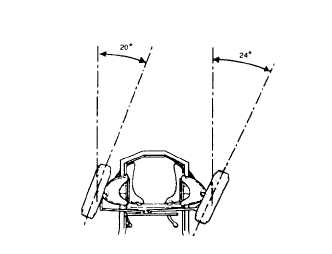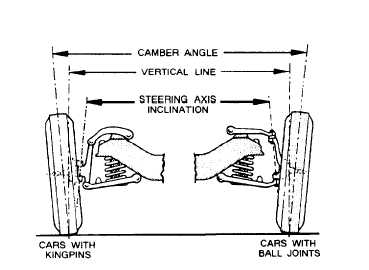
Figure 12-21. - Checking the turning radius.
point. This will cause less wear on the steering gears. A suggested procedure is as follows:
1. Position the wheels straight ahead; check the position of the steering wheel. It should be centered; if it is not, center it now. To find center, turn the steering wheel all the way to the left and count the number of turns while turning it all the way to the right. Now, turn the steering wheel back half the number of turns. Now check the front wheels; one may be turned in more or less than the other; adjust them so that they are parallel with the frame of the vehicle.
2. At this point, your toe reading should be zero (0). Now, adjust the toe by turning the tie rod end sleeves. They should be adjusted in equal amounts. If the setting is 1/4-inch toe-in, you take 1/8th off the right and 1/8th off the left wheel.
NONADJUSTABLE ANGLES
Now that we have covered the angles you can adjust, it is equally important that you understand the nonadjustable angles and how they can be checked as presented in the following section.
TURNING RADIUS
Turning radius is nonadjustable, but it can be checked (fig 12-21). Using turntable pads calibrated in degrees, turn the right wheel 20 degrees and read the setting on the left wheel. Then turn the left wheel 20 degrees and read the setting on the right wheel. Check your readings against the manufacturer's specifications. If all other adjustments are correct (caster, camber, toe-in), and the turning is incorrect, replacement of the steering arm is the only method of correction.

Figure 12-22. - Steering axis inclination.
STEERING AXIS INCLINATION (SAI)
Steering axis inclination is nonadjustable; it is the angle formed by the true vertical centerline of the ball joints or kingpin (fig. 12-22). SAI and camber are closely related. If you change the camber by tilting the top of the wheel in or out, you change SAI an equal amount. As previously stated, SAI is nonadjustable; therefore, the angle built into the steering knuckle does not change unless it is bent.
To check the spindle or spindle support, measure both camber and SAI. If camber is positive, add the two measurements. If camber is negative, subtract the camber measurement from the SAI measurement. The resulting figure is the angle built into the spindle support. Check the manufacturer's specifications. If your readings differ from the manufacturers, then the only corrective action is to replace the bent spindle.
STEERING AND ALIGNMENT TROUBLE
The driver can sense steering and alignment trouble. He or she can detect hard steering or play in the steering system and will call you to find the trouble and remedy it. The following are some complaints and their possible causes;
1. When breaking, vehicle pulls to one side:
a. Uneven tire pressure
b. Brakes grab
c. Caster incorrect or uneven
d. Wheel bearing too tightContinue Reading
